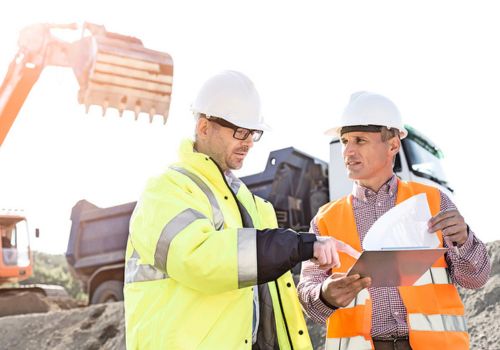The next time CONEXPO-CON/AGG takes place in 2023, attendees will have considerably more exhibit space to stroll around in. They'll also have an innovative way to get from one end of the show to the other.
The Boring Company, owned by well-known entrepreneur Elon Musk, is constructing an underground people-moving system at the Las Vegas Convention Center (LVCC). It is somewhat akin to a subway, only the transport mode is an autonomous electric vehicle (AEV) as opposed to a railcar.
Known as the Las Vegas Convention Center Loop, the new transport system consists of two one-way tunnels and three strategically located passenger stations. One tunnel has already been completed while the other remains under construction. The three passenger stations are also under construction.
The Loop will connect the LVCC's existing space with its new West Hall expansion. Both projects are expected to be ready for the public by January 2021.
With an estimated price tag of $980 million, the West Hall expansion will add 1.4 million sq. ft. to the existing 3.2 million sq. ft. campus. Along with exhibit space, the project also includes an outdoor plaza and grand atrium. The exhibit hall includes modern plumbing, electrical and data infrastructure so exhibitors can connect without the use of on-ground wiring.
Pioneering a New Mode of Passenger Transportation
As impressive as the West Hall expansion is, The Loop is what is really turning some heads. This innovative approach to passenger transportation is still brand new in the U.S.
According to The Boring Company, The Loop gives convention attendees an opportunity to get from one end of the LVCC to the other in roughly one minute. It typically takes around 15 minutes to walk from one end to the other.
The standard people-moving vehicle is an AEV, in this case a Tesla Model X or Model 3. Tesla is also owned by Elon Musk. A modified Model 3 chassis allows for the transport of up to 16 people at once. The AEVs are guided by conduit sensors in the tunnels. They can safely travel up to 155 mph.
The Boring Company's broader vision for the U.S. is a large network of tunnels many layers deep. By tunneling underground, there is less societal disturbance during construction. Then, as infrastructure demand increases, additional tunnel layers can be constructed to increase passenger-transporting capacity in the same general area. Also, The Boring Company says tunnels are proven to have the ability to withstand earthquakes.
Tunneling has yet to catch on in the U.S. for one primary reason: cost. Traditional tunneling equipment has been slow and incapable of producing a desirable output. The Boring Company says past tunneling projects often ran at $1 billion per mile. In order to make tunneling a practical alternative to traditional roadways, that cost needs to be reduced by a factor of 10.
The Boring Company says it knows how to make it happen.
More productive equipment. Tunneling speed and equipment utilization needs to be improved. Traditional equipment only spends half its time tunneling; the other half is spent erecting tunnel support structures. But The Boring Company says existing equipment technology can simply be modified in order to support continuous tunneling.
Tunnel boring machines also need to operate faster. The Boring Company says a machine's power output can be tripled when paired with the appropriate upgrades in cooling systems.
Smaller tunnels. Due to their more compact size, AEVs make it possible to reduce tunnel diameter by 50 percent to 14 feet. That alone reduces construction cost by 300 to 400 percent.
Automation. Smaller tunnel boring machines are already automated. However, larger machines are not. The Boring Company says more emphasis must be placed on automating these larger machines, which currently require several people to operate.
As the U.S. seeks answers to many of its infrastructure challenges, The Boring Company hopes to construct additional underground people-mover systems soon. The company has a few potential projects currently in the review and permitting phase:
- Los Angeles — transporting people from various neighborhoods to Dodger Stadium
- Chicago — express service from downtown to O'Hare Airport
- Washington, D.C. to Baltimore
The Boring Company also has a test tunnel that is already operating in its home base of Hawthorne, California. However, the Las Vegas Convention Center Loop represents the company's first commercial endeavor.
"Las Vegas continues to break through boundaries, and we look forward to offering this first of its kind transportation solution to our convention attendees," says Steve Hill, LVCC CEO and president.
By the time CONEXPO-CON/AGG 2023 rolls around, The Loop will be fully operational. In fact, it will already have a couple years under its belt.
Images and video © 2020 LAS VEGAS CONVENTION AND VISITORS AUTHORITY.












